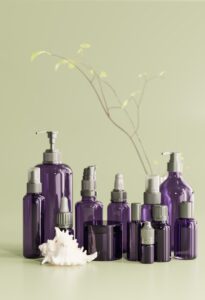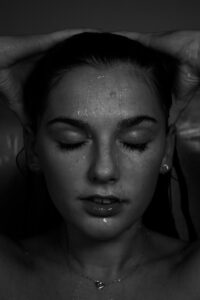Properly Wash Your Hair: Shampoo and Conditioner Tips
Welcome to Cameo College, where we believe that understanding the fundamentals of hair care is essential for maintaining healthy and vibrant hair. Whether you’re a prospective student eager to learn the intricacies of beauty care or someone looking to enhance your personal hair routine, learning how to properly wash your hair with the right shampoo and conditioner is crucial. In this article, we will guide you through the essential tips and techniques to ensure your hair remains luscious and well-nourished.
Understanding the Basics of Hair Washing

Photo by Erick Larregui on Unsplash
The Importance of Washing Your Hair
Washing your hair is not just about cleanliness; it’s a vital part of maintaining the health and vitality of your hair and scalp. Properly washing your hair helps remove excess oil, product buildup, and environmental pollutants, ensuring that your hair follicles remain unblocked and healthy. This process is crucial for promoting hair growth and preventing issues such as dandruff and hair loss. By learning the right way to wash your hair, you can keep your hair healthy and nourished.
How Often Should You Wash Your Hair?
The frequency of hair washing depends on factors such as your hair type, lifestyle, and personal preferences. While some may need to wash their hair every day due to excess oil production, others with dry hair may benefit from less frequent washes to preserve natural oils. Understanding your hair’s unique needs is crucial in determining how often you should wash. By carefully assessing your hair type and scalp condition, you can develop a tailored hair routine that keeps your hair clean and well-maintained without stripping it of essential moisture.
The Right Way to Wash Your Hair
To wash your hair properly, follow these steps:
- Start by wetting your hair completely with lukewarm water. Use your fingers to massage the shampoo into your scalp, focusing on the roots where oil and dirt accumulate. Be cautious not to use too much shampoo, as a small amount is generally sufficient.
- Rinse your hair thoroughly before applying conditioner, concentrating on the ends of your hair to prevent them from becoming dry.
This method ensures that every time you wash, you clean your hair and scalp effectively without causing unnecessary damage. Finish by gently drying your hair with a towel to avoid breakage.
Choosing the Right Shampoo

Photo by pmv chamara on Unsplash
Types of Shampoo
When selecting a shampoo, it’s crucial to consider your hair type and specific hair needs. There are various types of shampoos available, each formulated to address different concerns. For instance, if you have dry hair, opt for a moisturizing shampoo that helps retain natural oils, while those with fine hair might benefit from a volumizing shampoo. Understanding the properties of different shampoos enables you to choose a product that will effectively cleanse your hair and scalp without stripping essential moisture.
How to Apply Shampoo
Applying shampoo correctly is an integral part of learning how to wash your hair properly. Here are the steps to follow:
- Begin by wetting your hair thoroughly with lukewarm water, as this helps open up the hair cuticles.
- Use your fingers to apply a small amount of shampoo, focusing on the scalp where oil and dirt tend to accumulate.
Massage the shampoo gently into your scalp using circular motions to stimulate blood flow and promote hair growth. Ensure you rinse your hair thoroughly to remove all traces of shampoo, preparing it for the next step in your hair care routine.
Leaving Shampoo: How Long Should You Leave It On?
While some may wonder how long you should leave shampoo on your hair, the key is not to let it sit for too long. After massaging the shampoo into your scalp, it’s generally sufficient to leave it on for a minute or two. Here are some important considerations:
- This allows the active ingredients to work effectively without over-drying your hair.
- Leaving shampoo on for an extended period might disrupt your scalp’s natural balance, leading to issues such as dandruff or irritation.
Always rinse your hair thoroughly to ensure no residue is left behind.

Photo by Photo By: Kaboompics.com on Pexels
Conditioning Your Hair
Why You Should Condition Your Hair
Conditioning is a vital step in maintaining the health and vitality of your hair. It helps replenish moisture and nutrients that may be lost during the shampooing process, ensuring your hair remains soft, smooth, and manageable. Conditioning also aids in detangling your hair, reducing the risk of breakage and split ends. By incorporating a conditioner into your hair care routine, you can nourish your hair and protect it from environmental damage, keeping it healthy and vibrant over time.
How to Apply Conditioner
To apply conditioner effectively, start by squeezing out excess water from your hair after rinsing out the shampoo. Apply the conditioner primarily on the lengths and ends of your hair, as these areas tend to be drier and more prone to damage. Use your fingers or a wide-tooth comb to distribute the conditioner evenly, ensuring every strand is coated. Allow the conditioner to sit for a few minutes, allowing it to penetrate and nourish your hair. Rinse thoroughly with cool water to seal the hair cuticles, locking in moisture and shine.
Focus on the Ends of Your Hair
The ends of your hair are often the most vulnerable to damage and dryness, making it essential to give them extra attention when conditioning. Concentrating the conditioner on the ends helps prevent split ends and breakage, promoting overall hair health. This practice is particularly important for those with long hair, as the ends can become easily tangled. By consistently focusing on the ends of your hair during conditioning, you can maintain its length and integrity, ensuring it remains strong and beautiful.
Techniques for Effective Hair Washing

Photo by Nora Hutton on Unsplash
Wetting Your Hair Before Washing
Wetting your hair thoroughly before washing is a crucial step in the hair wash routine. It helps to open up the hair cuticles, allowing the shampoo to penetrate and cleanse effectively. Use lukewarm water to avoid stripping your hair of its natural oils, which are essential for keeping your hair healthy. Ensuring that your hair is completely wet before applying shampoo also helps in evenly distributing the product, thus enhancing the overall cleansing process.
Rinsing Techniques for Clean Hair
Rinsing is a vital part of washing your hair properly, as it ensures that all shampoo and conditioner residues are removed, leaving your hair and scalp clean. Use cool water for the final rinse to help seal the hair cuticles, which locks in moisture and adds shine. By rinsing your hair thoroughly, you prevent product buildup, which can weigh down your hair and potentially lead to scalp issues such as dandruff. Taking the time to rinse properly is essential for maintaining healthy hair.
Brushing Your Hair Before and After Washing
Brushing your hair before washing can help detangle your hair and remove loose dirt and debris, making the washing process more effective. Using a wide-tooth comb after washing helps distribute conditioner evenly and prevents breakage. This practice is especially beneficial for those with long or thick hair, as it minimizes tangles and makes hair more manageable. By incorporating brushing into your routine, you can improve hair health and make styling easier.
Special Considerations

Photo by Andrea Piacquadio on Pexels
Washing Thick Hair
Thick hair requires special attention during washing due to its density. It’s important to use an adequate amount of shampoo to reach the scalp and cleanse thoroughly. Massage the shampoo into your scalp using your fingers to ensure even distribution. Thick hair may also benefit from a hair mask or deep conditioning treatment to keep it nourished. Properly rinsing and conditioning thick hair helps maintain its natural oils and prevents it from becoming dry or frizzy.
Daily Hair Washing: Pros and Cons
Washing your hair every day has its pros and cons, depending on your hair type and lifestyle. While daily washing can help remove excess oil and keep your hair feeling fresh, it can also strip your hair of its natural oils if not done carefully. For those with oily hair, daily washing might be necessary, but using a gentle shampoo is crucial to avoid over-drying. On the other hand, individuals with dry hair might need to limit wash days to preserve moisture and prevent damage.
Adjusting Your Routine for Different Hair Types
Different hair types require tailored hair care routines to address specific needs effectively. Fine hair may benefit from volumizing products, while dry hair needs moisturizing shampoos and conditioners to replenish lost hydration. It’s essential to understand your hair type and adjust your washing routine accordingly. Whether it’s choosing the right products or determining the frequency of washing, catering to your unique hair needs ensures optimal hair health and appearance, promoting long-term hair growth and vitality.

